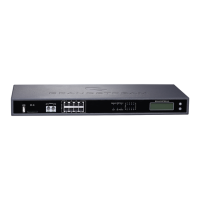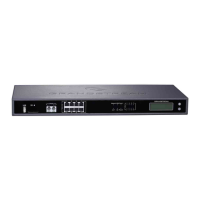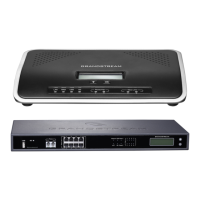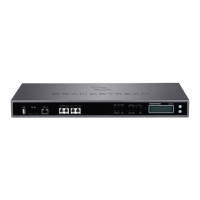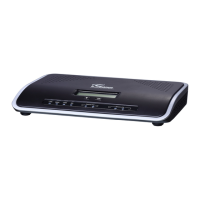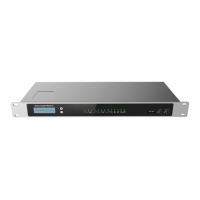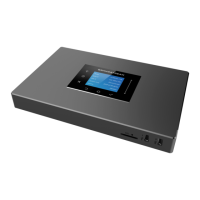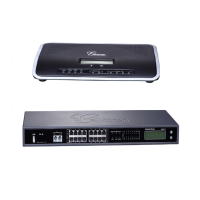UCM6200 Series User Manual
PBX Settings/Jitter Buffer
Table 83: Internal Options/Jitter Buffer
Select to enable jitter buffer on the sending side of the SIP channel. The default
setting is "No".
Configure the time (in ms) to buffer. This is the jitter buffer size used in "Fixed"
jitter buffer, or used as the initial time for "adaptive" jitter buffer. The default
setting is 100.
Configure the maximum time (in ms) to buffer for "Adaptive" jitter buffer
implementation, or used as the jitter buffer size for "Fixed" jitter buffer
implementation. The default setting is 200.
Configure the jitter buffer implementation on the sending side of a SIP channel.
The default setting is "Fixed".
• Fixed
The size is always equal to the value of "Max Jitter Buffer".
• Adaptive
The size is adjusted automatically and the maximum value equals to the
value of "Max Jitter Buffer".
PBX Settings/RTP Settings
Table 84: Internal Options/RTP Settings
Configure the RTP port starting number. The default setting is 10000.
Configure the RTP port ending address. The default setting is 20000.
Configure to enable or disable strict RTP protection. If enabled, RTP packets
that do not come from the source of the RTP stream will be dropped. The default
setting is "Disable".
Configure to enable or disable RTP Checksums on RTP traffic. The default
setting is "Disable".
Configure whether to support ICE. The default setting is enabled.
ICE is the integrated use of STUN and TURN structure to provide reliable VoIP
or video calls and media transmission, via a SIP request/ response model or
multiple candidate endpoints exchanging IP addresses and ports, such as
private addresses and TURN server address.
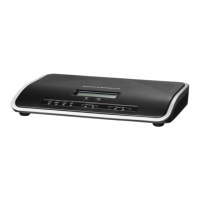
